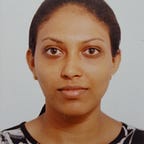Data speaks with the continuum of understanding
“There is none so blind as those who will not see”(Random House Dictionary of Popular Proverbs and Sayings, 1956)
From morning to night and night to morning, nature is dealing with data. Not only humans but also animals and plants too. A person looks at the outside of the window while having morning tea and see wet grass and muddy garden, the first thing that gets to his mind is ‘Oh! there was rain last night’. The data of wet grass and muddy floors bring the information on rainy last night. Is it enough? Data by itself doesn’t make sense. It needs more process to understand data.
“Without data, you’re just another person with an opinion” (W. Edwards Deming, data scientist)
The Continuum of understanding was coined at the Xerox PARC labs in the 1980s. This theory is still alive as a process of understanding data. Let’s discuss this theory with examples.
Data -> Information -> Knowledge -> Wisdom
The Continuum of understanding has 4 steps. Data, information, knowledge and wisdom.
Data
At the very beginning of every situation, the primary object is data. Data itself has no intrinsic value. It’s a raw state. It needs to be processed to extract the real essence. At this stage, you cannot earn any value out of data. For example, you may have data on the occurrence of COVID-19 in the population. With these raw data, you know nothing. You just gathering parts.
Information
In the next step, Information brings more value to data. It transforms data into information by sorting, processing and presenting. It connects parts of a context. By information, you know what. As the example of the occurrence of COVID-19 in the population, by sorting, processing and presenting data meaningfully, like comparing data based on geographical, age, gender, past health records, eating habits, you can find meaningful information and also you can find trends too.
Knowledge
This stage explains how you are going to apply information to the real world. Just keeping information is also useless unless you apply it to real context. You can build and test hypothesis and the results will bring ultimate solutions for the real-world problems. If we continue the previous example, here we can build and test hypothesis like,
- The COVID-19 has a chance of spreading more in urban areas.
- Teenagers are high victims of COVID-19.
- Male’s immunity system positively reacts with COVID-19.
After analysing results of hypothesis, the results will bring us to the next level of information and how to apply solutions to the problems. Context formation as a whole.
Wisdom
The final step of continuum of understanding. In data, we had just some of the data and we sorted, processed and presented data into information. By analysing information by applying hypothesis, we gained knowledge for a real-world problem. Now at the end, we gain wisdom, or else now we can judge the raw data in a qualified manner. At this point, we have gained so much knowledge and expertise. In the first 3 steps, all that we know about past experience. We gathered parts, connected them and formatted as a whole. The final step is about the future. It joining of a whole and the wisdom will bring you for a better future.
In all these steps, Information visualization helps us a lot. Great visualization is a powerful tool to turn large dataset into wisdom.
